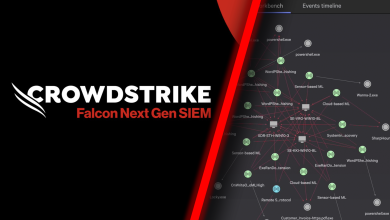Singapore CISOs Gain Board Support Only Post-Attack

Trellix, the cybersecurity company delivering the future of extended detection and response (XDR), recently released new research as part of the company’s Mind of the CISO initiative. Trellix’s ‘Mind of the CISO: Behind the Breach’ research surveyed global Chief Information Security Officers (CISOs) across major industries in Singapore to better understand the unique challenges faced after experiencing a cyber-attack.
“Raising the urgency and cyber literacy of their own board is one of the CISO’s greatest challenges,” said Bryan Palma, CEO of Trellix. “The research suggests many boards’ willingness to support cybersecurity only happens after an attack. Clearly, it should be the other way around.”
“Today’s complex security landscape calls for more than being merely reactive – a proactive stance should be a business priority”, said Jonathan Tan, Managing Director for Asia at Trellix. “The hidden consequences for an organization post-attack – which includes not just a loss of money but reputation – can be avoided. Investing in the right technology that constantly evolves is therefore critical to help protect against sophisticated cyber threats, which will only increase with time.”
The research reveals what CISOs face in the aftermath of a cyber incident:
-
CISOs remain reactive until boards become proactive. 100% of CISOs receive more support from the board following an attack – with 43% receiving an increased budget for additional technology, 40% revising their overall security strategy, 27% implementing new frameworks and standards, and 20% creating new jobs and responsibilities after an attack.
-
CISOs face attacks from all angles. Data theft attacks (47%), DDoS attacks (47%), and credential stealing (40%) are most commonplace.
-
XDR is a viable threat prevention solution. At least 87% of respondents agree improvement is needed across people, processes, and technology after experiencing a major cyber incident. Further, 100% believe if their organization had implemented XDR, the major cybersecurity event they experienced would have been prevented.
“XDR can actually aggregate and correlate data from multiple sources and, therefore, reduce false positives. We see less alert fatigue in the security teams, and XDR allows us to be proactive rather than defensive and post facto, another big difference,” shared a CISO of a UK company.
-
Hidden consequences of cyber incidents also impact organizations. Revenue loss (47%), a consequence of clear costs, was reported as having the biggest impact. Additionally, there were also reported significant impacts such as business downtime (40%), stress to their SecOps teams (33%), and declining reputation (23%) as factors negatively impacting organizations.
“Experiencing a cyber incident reinforced the concept that we need to be ever-vigilant, and no matter how secure we think we’ve gotten things, no matter how many tools we have in place, it’s a constant battle,” shared a CISO of a U.S.-based manufacturing company.
To increase engagement among and support for CISOs, Trellix launched its Mind of the CISO initiative earlier this year, encompassing a CISO Council, webinars, and research. For more on these new findings, Trellix’s ‘Mind of the CISO: Behind the Breach’ eBook can be found here.




